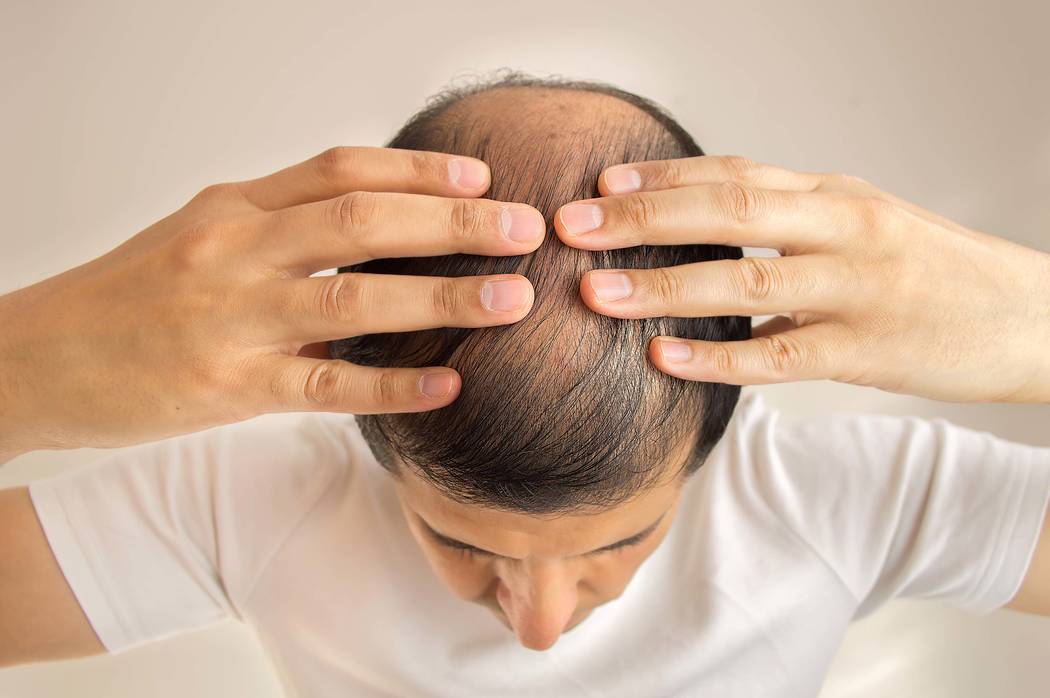Treating hair loss moves past topical treatments
We asked H.L. Greenberg, a board-certified dermatologist in Las Vegas, about hair loss.
Review-Journal: What’s new in hair loss?
Greenberg: It used to be that all we had to treat hair loss was Rogaine and Propecia. There are now newer products like hair-growth shampoos, biotin vitamins, supplements such as Viviscal (fish extract), lasers and platelet-rich plasma (PRP). New laser and light devices, such as the Hairmax comb or the Theradome hair helmet, stimulate hair growth. There also are advancements in hair transplantation — the ARTAS robot uses a machine to identify individual follicular units on the back of a patient’s scalp, which are extracted and then placed in areas of hair loss in the scalp by a surgeon. The robot’s effort avoids operator fatigue and can hide where the hairs are taken better than other more traditional methods. Hair transplants can run $12,000 to $20,000 per treatment; PRP typically costs $800 to $1,200 per treatment.
How does platelet-rich plasma work to regrow hair?
This is an innovative therapy in general for all types of medical problems. PRP for hair loss is a relatively new phenomenon, but it has been incorporated into hair transplant surgery. Our platelets are warehouses of renewal goodness. After injury, platelets release various growth factors, which stimulate wound healing by helping promote the regrowth of collagen, blood vessels and hair. Using the body’s own healing mechanisms in our blood, we are able to grow more and thicker hair.
At Las Vegas Dermatology, we are following Dr. Jeffrey Rappaport’s protocol of injections for the Eclipse PRP system — every month for four months followed by twice yearly injections. PRP is not yet FDA approved for hair loss, but the Eclipse system is cleared for use, and studies of PRP for hair growth are ongoing. It was the hot topic at this year’s American Academy of Dermatology annual meeting.
What causes hair loss, and is there anything specific to the Southern Nevada climate that contributes to it?
Male and female pattern hair loss are the most common, but it is important to identify any underlying medical conditions that might be contributing to loss, such as autoimmune issues including thyroid disease, lupus and diabetes, along with malnutrition or nutritional deficiencies and anemia.
In Nevada, despite the many days of sunshine, there are issues with low vitamin D levels. Although not a common cause of hair loss, vitamin D has been linked to the autoimmune condition alopecia areata (round patches of non-scarring hair loss).
What options are there for people with too much hair?
Most of us are growing hair where we don’t want it and losing it where we do want it. Unwanted hair can be socially embarrassing. When you change the way you remove hair, whether you go from epilating to waxing to shaving to straight-edge razor to electric razor to laser, you are going to get a reaction. Skin eruptions, acne and ingrown hairs are common reactions. Laser treatments can remove almost all unwanted hair after six treatments spaced six weeks apart. Unfortunately, laser hair removal only works on brown or black hairs; grey, red or blond hairs are not touched by laser hair removal machines. Laser hair removal can’t be performed on tanned skin and can’t be done over tattoos, so think before you ink.
What differentiates dermatologists from other providers?
Dermatologists spend an extra three years of specialized residency training after four years of medical school. Some may claim to be skin-care experts, but board-certified dermatologists are trained in all aspects of skin disease diagnosis and treatment. We also see the complications that can happen when nonexperts provide these kinds of treatments. Dermatology is a lot more than popping pimples. We diagnose melanoma, allergic skin conditions, perform laser and cosmetic procedures to enhance appearance, and dermatologists even invented liposuction.




























